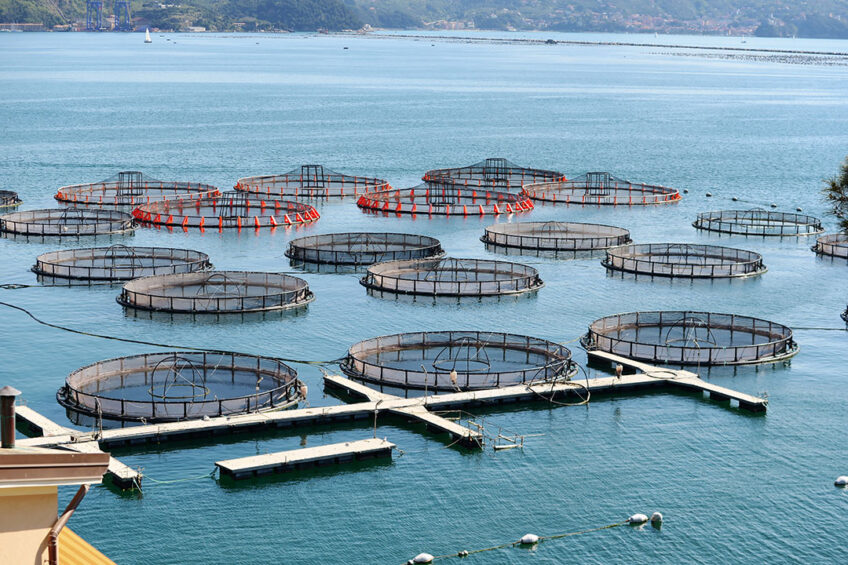The re-emergence and future of PAPs in aquafeed

In a study published in the journal Reviews in Aquaculture, researchers elaborate on the use of European processed animal proteins as safe, sustainable, and circular ingredients for global aquafeeds.
The global increase in demand for seafood has resulted in significant growth in aquaculture production in a wide range of aquatic species. Consequently, this has led to an industry-wide need to find sustainable feed ingredients that can meet the nutritional requirements of aquafeeds.
Processed animal proteins (PAPs), which are nutritious feed ingredients made from animal by-products, are an alternative source of protein in aquaculture. The link between feeding animal by-products, specifically ‘meat and bone meal’ – and the bovine spongiform encephalopathy (BSE) outbreak in Europe during the 1980s resulted in a ban on its use as animal feed. This led to a radical overhaul of the rendering industry, including the use of only low-risk animal by-products and the development of rendering processes to reduce the risk of the prions that cause BSE entering the food chain.
This report examines how animal by-product production has changed due to the BSE outbreak, leading to the current commercially available PAP products for use in aquafeed. Researchers have evaluated how these products can be effectively used as viable protein sources in aquaculture and the potential advances that could lead to a more circular food production system.
The rendering industry
Since the emergence of BSE in the UK in 1986, many changes have occurred within the rendering and animal by-product industry, particularly in the EU, ranging from a ban on the use of PAPs to the development of EU animal by-product legislation and the re-emergence or re-introduction of rendered products into animal feeds. Rendering, the term used to describe the processing of animal by-products from land-farmed animals has recently taken centre stage in the development of a circular agricultural system.
PAPs available to aquaculture
Recent developments in detection and quantification techniques have paved the way for legislative changes allowing the safe re-introduction of non-ruminant PAPs into aquafeeds in 2013. Under European law, aquafeed may only be produced from Category 3 by-products.
Many different PAPs have been trialled on many different aquatic species with different inclusion levels showing a varying impact on growth performance and feed utilisation. Of the non-mammalian PAPs used in aquafeed, poultry-based PAPs are common and these include poultry meal, feather meal, and meat and bone meal.
The future of PAPs
There are several advances underway that could enhance the potential of PAPs in aquafeeds. Advances in the bioavailability of nutrients for aquatic species can be driven by changes in process techniques, bioprocessing methods or by the synergistic blending of animal proteins.
Process techniques
All processes used for the treatment of animal by-products must meet the strict criteria laid down in the EU regulations and this could limit the degree of flexibility as technical processing advances. However, there is still scope for technological improvements on PAPs associated with enhancing higher digestibility coefficients for the major nutrients such as protein, energy, and macro-elements.
Advances in technical processing may further enhance PAPs to create functional properties (i.e., benefiting the physicochemical qualities of the feed) or refined to possess new bioactive attributes resulting in, for example, bioactive proteins, short-chain peptides, antioxidants and antimicrobials.
Bioprocessing
Another way to improve nutrient digestibility is the use of hydrolysis (e.g., enzymatic, acid or alkali) as a follow-on treatment after the heat rendering treatment. These processes are often used to produce poultry protein concentrates that enhance the effectiveness of fish diets compared with standard poultry meal, for example, by boosting growth performance.
Although acid hydrolysis is a versatile method, its drawback is that the breakdown process is often a non-specific process that may not allow precise extraction of proteins with the desirable bioactivity or amino acid profile.
The diversity of enzymes and their specificity in breaking down proteins indicates that there is significant potential for advances and improvement within the rendering industry. This diversity can potentially give the industry the ability to select and extract specific desirable peptides from within protein structures. On the same note, animal-derived enzymes tend to have a more specific function than enzymes derived from plants and fungi, which have a much broader range of functions.
Studies show that another cost-effective approach to improving nutrient bioavailability and bioactivity is to ferment PAPs as a solid-state substrate using hydrolytic enzymes.
Blending and synergism
Current research work shows the co-feeding of a mixture of PAPs could create a complementary or synergistic meal that could effectively replace fish and plant meals in aquafeeds without compromising growth performance. Scientists suggest that to identify the optimal PAP mixtures and harness their synergistic effects, a feed study could be based on the concept of a mixture design in its test feed formulation (e.g., simplex centroid and D optimal matrices) and examined using associated statistic methods, for example, response surface analysis and modelling; this can save the need for numerous feed mixture permutations which can be laborious and economically unviable.
Concluding remarks
The rendering industry provides both a valuable service in safe and sustainable management and recycling of nutrients back into the food supply chain. The nutritional, environmental and economic characteristics of PAPs make them valuable ingredients for the aquafeed industry. Developments in detection and quantification techniques paved the way for legislative changes allowing the safe re-introduction of non-ruminant PAPs into aquafeeds in 2013. However, there remains scope for further studies to be completed to validate PAPs as an effective and safe aquafeed ingredient. The PAPs sector has much to offer to aquafeed manufacturers in addressing the growing quest for safe, sustainable and economic feed ingredients for both farmed fish and shrimp.
This article is based on an original article by S. L. Woodgate, A. H. L. Wan, F. Hartnett, R. G. Wilkinson, and S. J. Davies. ‘The utilisation of European processed animal proteins as safe, sustainable, and circular ingredients for global aquafeeds.’ Reviews in Aquaculture, 14:1572–1596.











